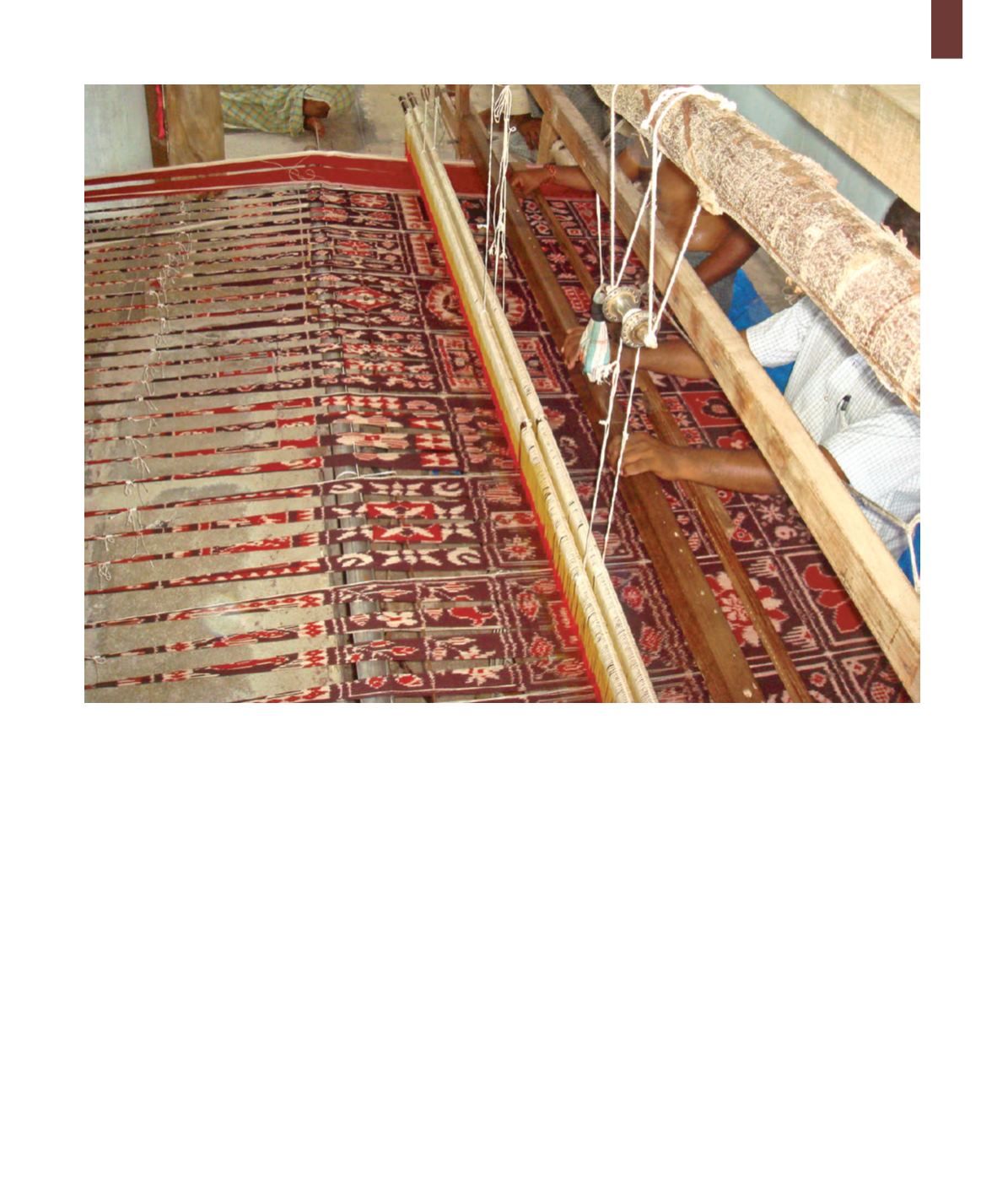
63
Producing a Telia Rumal requires skill, patience,
time and effort. The white coloured yarns
procured are first soaked for one day in a
solution of goat droppings and water. The
yarns are taken out the next day, dried and then
washed. Then a solution of a powder of the
ash of castor seed pods and sesame oil is made
and the yarns are dipped in it and removed,
every day for twenty-one days. The yarn is then
washed and dried. This oil treatment softens the
yarn, helps it absorb natural dyes and take on
beautiful saturated colours. As mentioned, this
oil treatment of the yarn also gives the textile its
unique properties of keeping the wearer’s head
cool in the summer and warm in the winter, not
sticking to the fisherman’s body when out at sea
and also attracting fish by its smell!
After the yarns are ready for dyeing, they are
tied and dyed that is resist-dyed according to
the pattern decided. The tie-dyeing has to be
perfect so that when the weft and warp yarns
meet at the loom, the weaving will result in
detailed solid colour motifs set in squares or
diamonds. Telia Rumals typically feature a
grid of squares or diamonds or geometrical
patterns. Each square or diamond features a
motif and a broad red border. These motifs
could be of a fruit, flower, bird or animal
or it could be geometric patterns. Some old
Telia Rumals feature motifs like an aeroplane,
wall clock and flower vase! Thus, the dyeing
process required immense concentration to get
the resist-dyed sections right for the complex
patterns. Once the yarns are dyed, they are set


